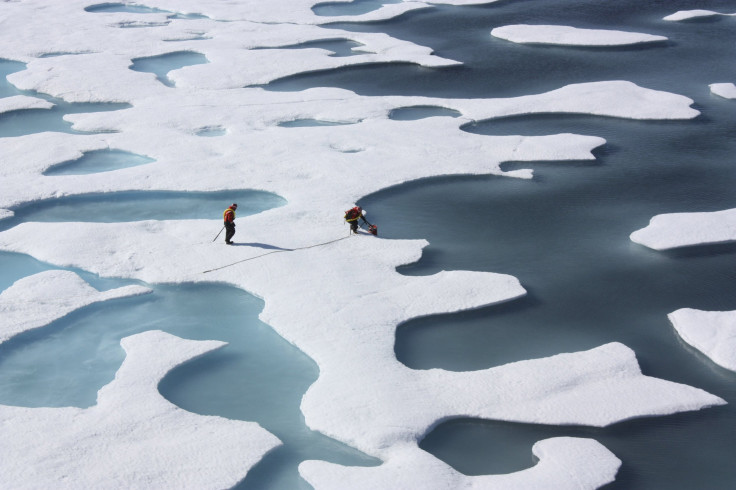Unfrozen: Polar Ice Sheet Retreats Again

A few weeks ago, on March 21, the ice in the Arctic Ocean reached its maximum winter extent. According to new data released by the U.S. National Snow and Ice Data Center, the ice surrounding Earth’s North Pole swelled to 14.91 million square kilometers, or 5.76 million square miles – its fifth-lowest peak since 1978.
Arctic sea ice expands and shrinks every year with the seasons, getting thicker during the northern winter and growing thinner during the spring and summer. Since 1978, scientists have used satellite imagery to chart the inhales and exhales of Earth’s polar ice caps. According to their data, the average Arctic sea ice extent between 1981 and 2010 was 15.53 million square kilometers, meaning this year’s ice coverage was about 730,000 square kilometers shy of the 30-year mean.
Since 1978, the Arctic ice cap has shrunk by 12 percent per decade. The lowest winter maximum on record occurred in 2011 and measured 14.63 million square kilometers.
As this season’s winter ice begin its slow spring retreat, scientists consider how the lower-than-average winter ice coverage will affect the North Pole region and how these measurements fit into the larger equation of declining Arctic ice coverage. Climate Central reports that scientists have witnessed a “downward trend” in Arctic sea ice extent over the past two decades due to rising global temperatures.
The decline is particularly evident at the end of the summer melt season, which has been getting longer. The delayed fall freeze means there is less ice around the North Pole at the beginning of winter. According to a February study published in the journal Geophysical Research Letters, the seven lowest September ice extents were in the past 10 years, including 2013.
Still, scientists say predicting what could happen during this year’s summer melt season is difficult.
“There’s a lot we need to learn and improve upon,” Julenne Stroeve, a senior scientist at the National Snow and Ice Data Center in the U.S., told Climate Central. “It’s just really hard to predict those wiggles along those downward trends.”
The loss of sea ice in the north is a major concern for scientists because the Arctic ice is a key factor in the regulation of global temperatures. Arctic ice reflects sunlight which keeps the Earth cooler. Discovery notes that as the Arctic ice cap melts, it creates more ocean surface, which absorbs the sunlight that would have been reflected back into space. A warmer Arctic Ocean can disrupt atmospheric circulation, resulting in wonky weather patterns across the globe.
The ice is also essential for the survival of species like ringed seals and polar bears. It supports essential algae, which is the basis of the Arctic food chain. Without the algae, the system could collapse.
© Copyright IBTimes 2024. All rights reserved.






















